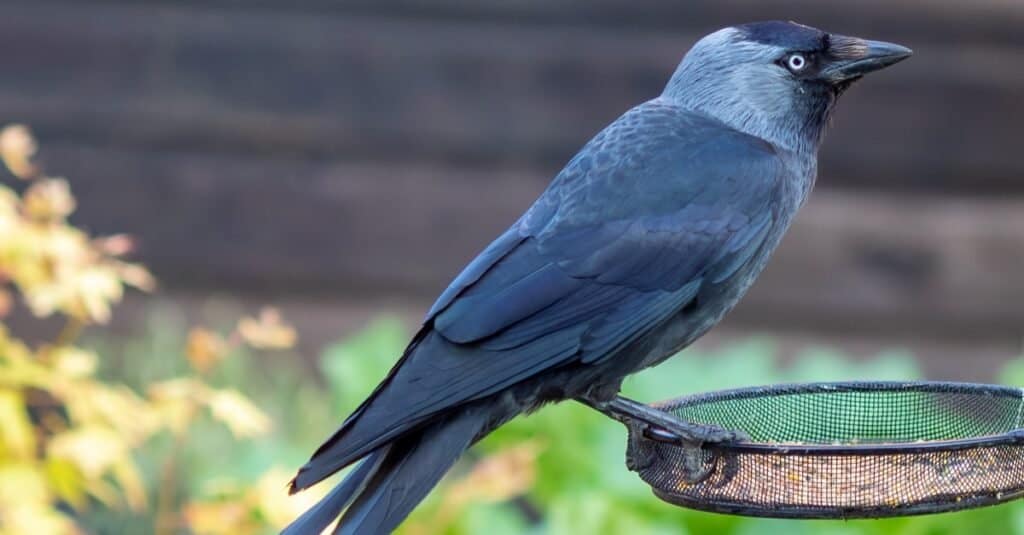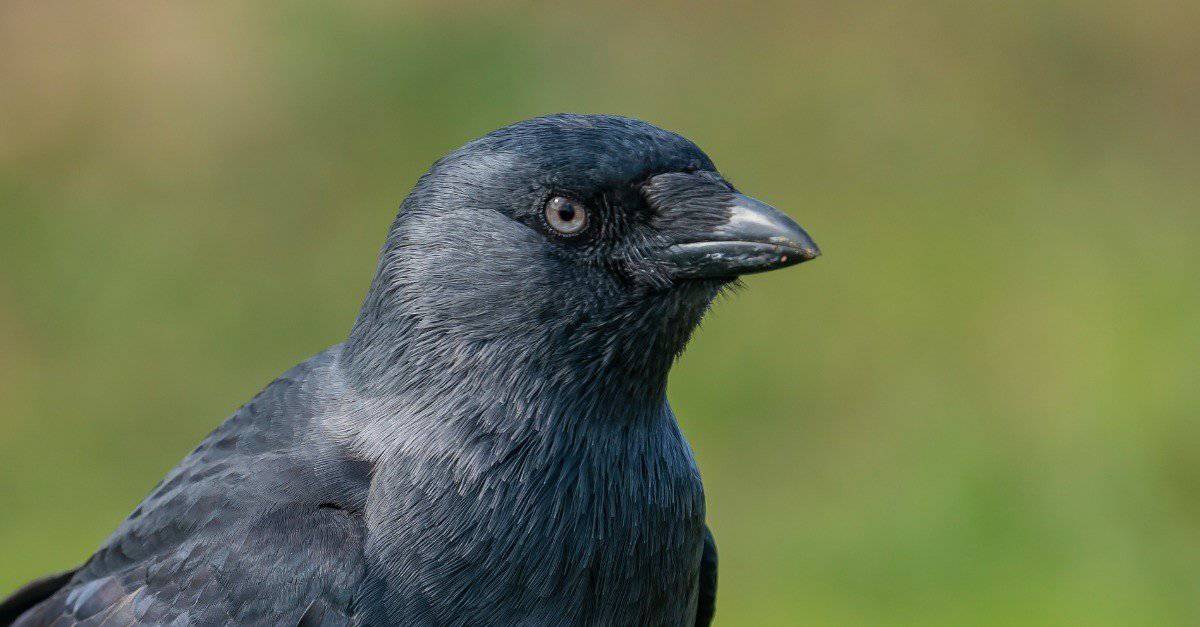The jackdaw is a clever and mischievous bird, a capable scavenger, and a devoted partner.
There are generally two recognized species: the Eurasian jackdaw, which can be found almost anywhere between Western Europe and Central Asia, and the Daurian jackdaw, which calls home eastern Asia. As members of the Corvid (crow) family, they are highly intelligent and sociable. They rank among the few tool users in the entire animal kingdom. An important piece of symbolism in many human cultures, there are many interesting facts about this clever bird.
3 Amazing Jackdaw Facts!
- This bird has an annual molting season in the summer and autumn when it replaces the entire plumage. Its feathers will actually start turning gray with age.
- This bird is attracted to shiny trinkets. It is often caricatured in stories as a thief.
- While the jackdaw shouldn’t be kept as a pet, this bird can be tamed and even taught various tricks. One of the most interesting facts is that it has the remarkable ability to mimic the human voice and other sounds.
Where to Find the Jackdaw
This bird is normally found in farmlands, woodlands, cliffs, and even urban habitats across its entire natural range of Eurasia. Entire groups of them can be seen foraging along the ground of open terrain.
Articoli correlati
- Scopri il lago più profondo dell'Iowa
- Scopri il ponte più lungo della Virginia: un colosso di 17 miglia!
- Le 7 arene più grandi del New Mexico
- Guarda un coccodrillo che attacca due leoni maschi a fare una nuotata
- Marito e moglie liberano un lupo grigio e si avvicinano troppo
Jackdaw Nests
This bird will create a nest in almost any kind of cavity it can find, including tree holes, chimneys, attics, and other manmade structures that replicate its natural height. The nest itself consists of an outer section lined with larger sticks and an inner section lined with wool or hair.
Jackdaw Scientific Name
The taxonomical classification of the jackdaw is still the subject of some debate. It has traditionally been a member of the genus Corvus (the Latin word for the raven), but some taxonomists place it in its own separate genus called Coloeus (the ancient Greek word for the jackdaw). The scientific name of the Eurasian jackdaw species is C. monedula. This is derived from a Latin word meaning money, in reference to its penchant for stealing shiny trinkets. The scientific name of the Daurian jackdaw is just C. dauuricus.
Jackdaw Size, Appearance, and Behavior
The jackdaw is the smallest member of the Corvid family, measuring about 13 inches in height and around 8 ounces in weight. This is about the same weight of a typical drinking glass. While sporting a familiar crow-like dark plumage, it is most easily identified by the pale white iris and the light grey or white nape around the head or neck. Juveniles tend to have dull plumage with brown irises and take time to achieve their adult form. They also have strong black beaks and black-colored legs.
The basis of jackdaw’s “society” is the mating pair, which bonds for life. Together the pair roosts and feeds in even larger colonies, sometimes consisting of many thousands of birds. While the colony members are almost completely unrelated to each other, they do appear to cooperate in the acquisition of food and resources. If one member of the colony has found an ample source of food, then it will sometimes alert other members about the location as well.
These birds make a number of sounds to communicate with each other. The most common vocalization is the familiar jack or chak greeting sound for which they’re named. They also have alarm calls, mating calls, and roosting calls. As members of the Corvid family, jackdaws are thought to be some of the most intelligent animals on the planet. They have the ability to use tools, solve problems, and perhaps even recognize individual human faces.

Migration Pattern and Timing
Most jackdaws stay in the same place all year round, but the northernmost populations do migrate south for the winter. They can be seen flying in massive formations during the late autumn months.
Jackdaw vs. Crow
Both birds are very easy to accidentally mistake for each other. But the crow can be identified by the larger size and the darker plumage. The light-colored plumage around the neck is an obvious giveaway of the jackdaw.
Jackdaw Diet
This bird is a scavenging omnivore. It will eat almost anything it can find. Large colonies can be seen foraging along the ground, sometimes side by side with crows and rooks.
What does the jackdaw eat?
Its diet largely consists of seeds, fruits, and small invertebrates like insects, snails, and spiders. If it happens to come across abandoned carrion or untended bird eggs, then it will make a quick meal of those as well. It also has a habit of raiding garbage bins, landfill sites, and gardens.
Jackdaw Predators, Threats, and Conservation Status
Highly adaptable and versatile, this bird faces few threats in its natural habitat apart from predators. The IUCN Red List considers both the Eurasian and Daurian jackdaws to be species of least concern. Their population numbers are fairly stable for now.
What eats the jackdaw?
It is preyed upon by birds of prey, stoats, weasels, polecats, both wild and domesticated cats, and rodents. Many of these predators will seize eggs whenever they spy an opportunity, but some will prey upon the adults as well. Jackdaws will cry out and mob predators to drive them away.
Jackdaw Reproduction, Young, and Molting
The jackdaw forges a strong monogamous bond with another mate, often pairing up for life. During the annual mating season in April to July, the female will produce a brood of four to six eggs at a time. She is responsible for most of the incubation duties, while the father is responsible for foraging all of the food. The eggs hatch asynchronously (meaning at different times) in the general order in which they were laid. Sometimes the first chick will have already begun to fully fledge after about a month when the last chick is only just starting to emerge from its egg. However, if food is running particularly low, then the final chicks might be left to die. For those that survive, the juvenile will reach full sexual maturity by around its second year. It has an average lifespan of about five years in the wild, but this lifespan can be cut short by predators, disease, and starvation.
Jackdaw Population
It’s estimated that there are somewhere between 40 million and 85 million mature individuals of the Eurasian jackdaw in the wild. The population of the Daurian is smaller but still significant.
inding a new mate.
Are jackdaws a pest?
Some people may consider them to be a pest, because these birds do have a habit of raiding gardens and farms.
Categoria: Birds

